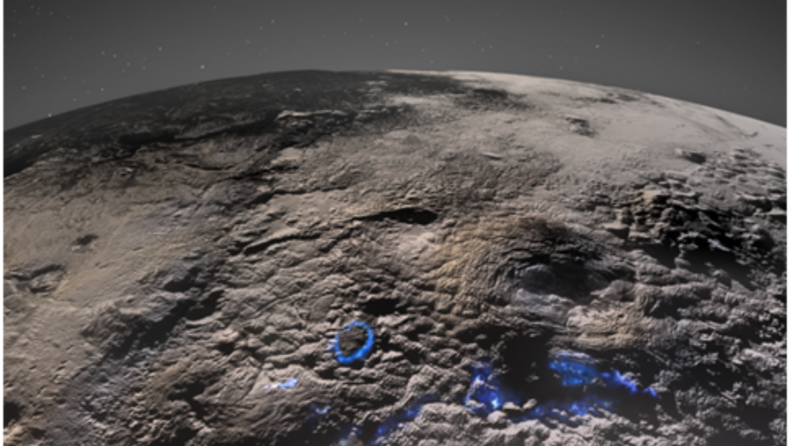A totally unusual world wanders in the alien darkness at the far edge of the Solar System, far from the Sun’s warmth and light. Astronomers have always been fascinated by Pluto. The question of whether it is a planet or not has been debated for decades. Pluto, the solar system’s ninth planet, was demoted to a dwarf world by the International Astronomical Union in 2006.
Pluto is the largest known celestial object in the Kuiper Belt. According to new research, it boasts a terrain carved by ice volcanoes unlike any other in the Solar System. Slush has risen from beneath Pluto’s surface to the south-west of the Sputnik Planitia, forming mountains of ice up to 7 kilometers (4.3 miles) tall. The Sputnik Planitia ice sheet spans a 1,000-kilometer-long old impact basin with unique rises and flanks.
In 2015, the New Horizons mission is the first spacecraft to fly by Pluto. That’s when the spaceship took some close-up pictures of Pluto, which revealed some fascinating facts about the planet. The photos and topographic maps of the region were scanned by scientists from the Southwest Research Institute in Boulder.
The first, named for the Wright brothers, is around five kilometers tall and 150 kilometers wide. It is comparable to the Mauna Loa volcano in Hawaii, which is one of the world’s largest volcanoes. Wright Mons’ presence was first suspected in January 2016, just a few months after the New Horizons spacecraft made its closest approach to Pluto.
Piccard Mons, the second, is named after Auguste Piccard, a twentieth-century physicist and balloonist. The discovery is around 7 kilometers tall. Smaller mounds may have merged over time to generate these two massive landforms, according to the scientists.
Pluto’s surface temperature is roughly -240°C on average, with rock-hard ice that doesn’t melt readily since it’s so far from the Sun and other heat sources. According to the authors, the dwarf planet would have stored the heat from its own birth, most likely in a deep liquid water ocean beneath the frozen crust.
What is Cryovolacanism or Ice volcanism?
The placing of icy material by volcanic processes is known as cryovolcanism or ice volcanism. Such phenomena have been observed by astronomers in various locations throughout our Solar System. The ones found on Pluto, on the other hand, are among the largest ever discovered, implying that Pluto’s interior was hotter until recently. Ice-volcanism is thought to have occurred during the last 100 million years or so, and it may still be occurring.
Ice volcanoes, rather than erupting with hot molten lava, erupt with slushy water slurries of volatile substances like ammonia and methane. They freeze and build up surface monuments after they emerge into frigid atmospheric conditions above earth, similar to how lava may produce volcanic mountains and calderas, except colder.
Several worlds in the Solar System, including the dwarf planet Ceres, Saturn’s moons Titan and Enceladus, Jupiter’s moon Europa, and even Pluto’s moon Charon, have features that resemble ice volcanoes.
NASA’s supposition from 2015 settles true
The latest study’s images and data, which were retrieved by New Horizons in 2015, confirmed prior assumptions concerning cryovolcanism on Pluto. NASA announced in 2015 that Pluto has cryovolcanoes. “New Horizons researchers used photographs of Pluto’s surface to produce 3-D maps that indicate two of Pluto’s most distinctive mountains could be cryovolcanoes — ice volcanoes that may have been active in the recent geological past,” they declared in a press release in 2015.
Published By : VATSAL KOTHA
Edited By : KRITIKA KASHYAP













